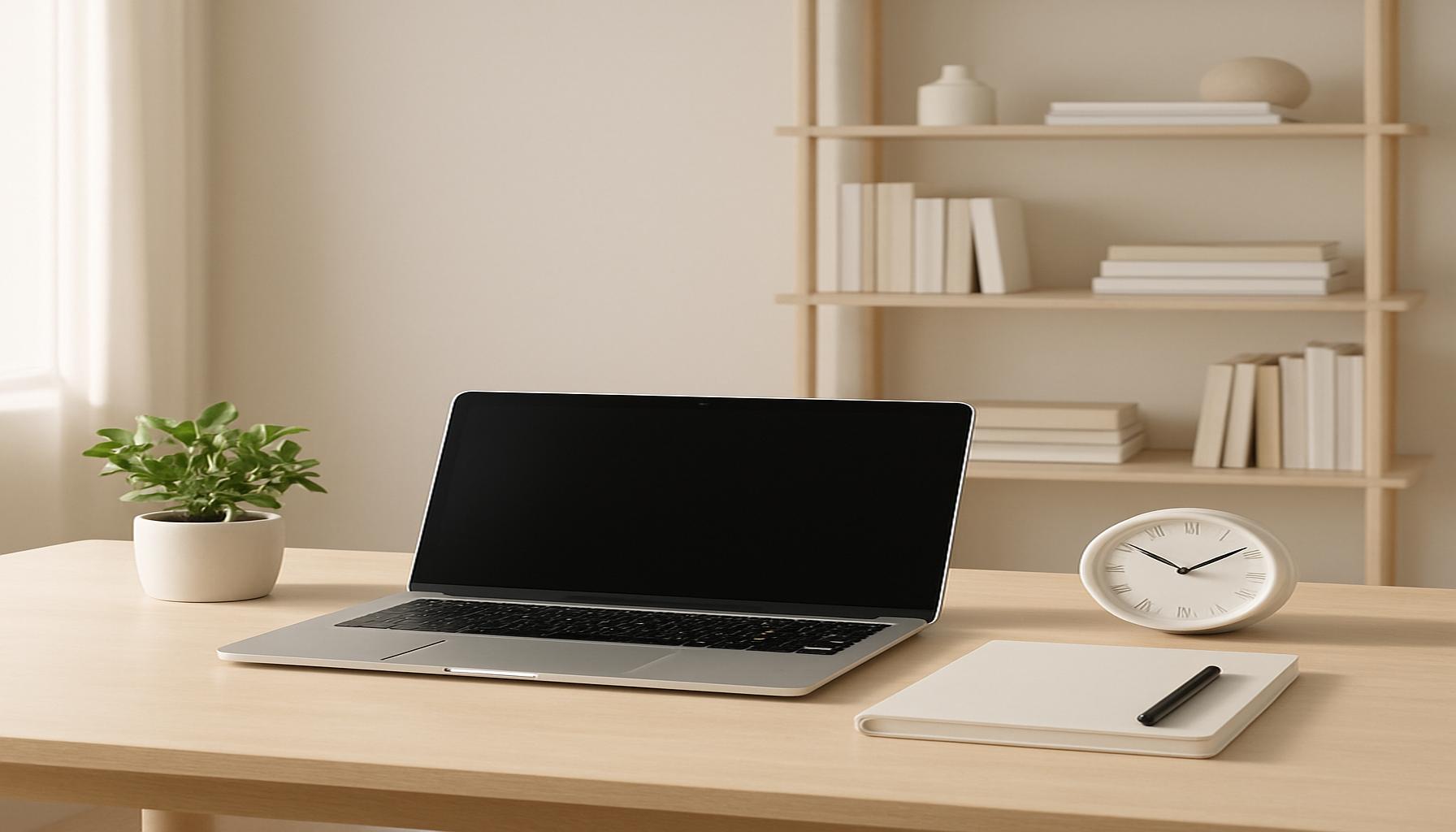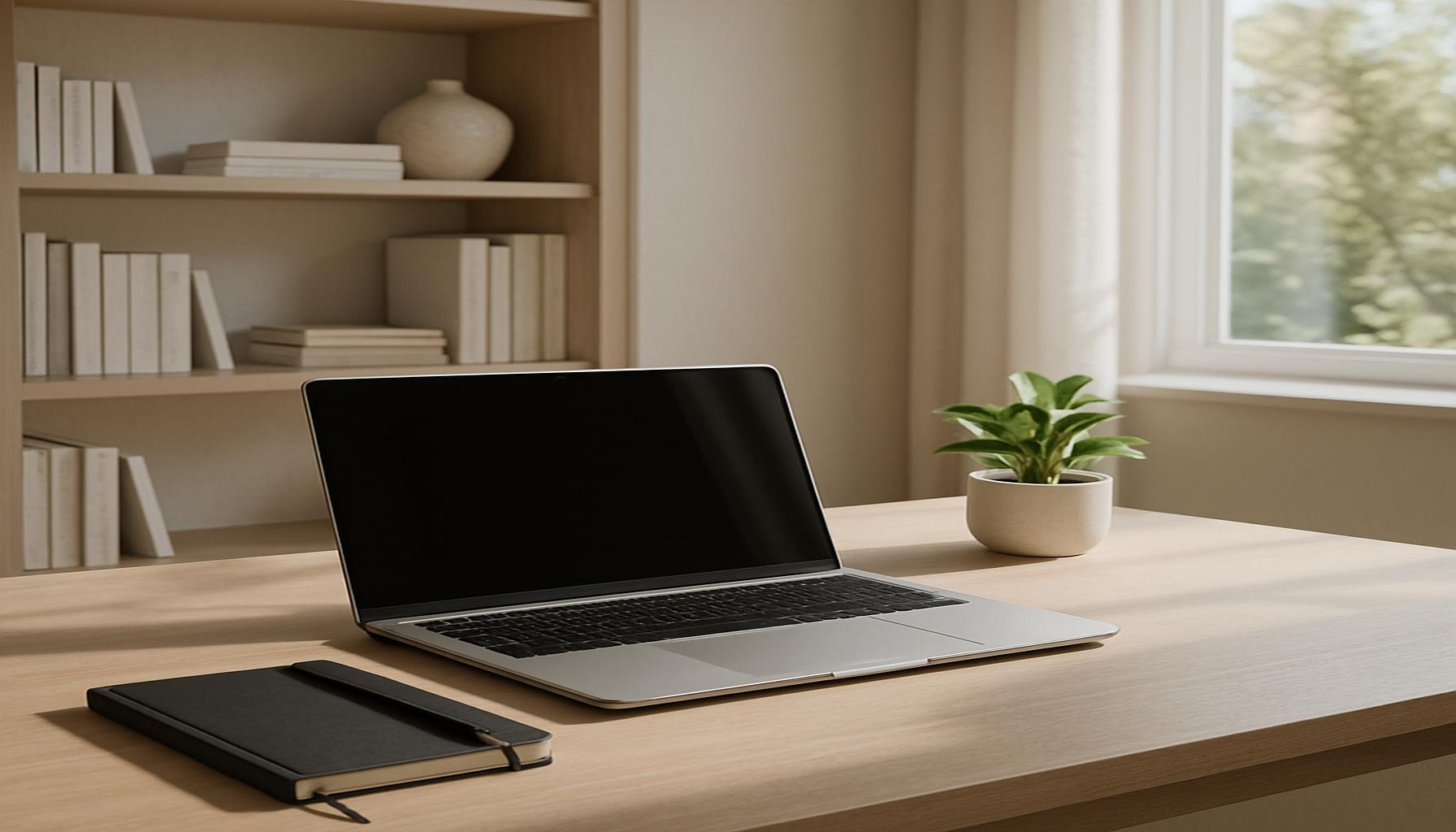Boost Daily Productivity with Minimalist Organization Strategies

Introduction
In today’s fast-paced world, many individuals are on a quest for efficiency, driving them to explore the realms of minimalism. As a philosophy rooted in simplicity, minimalism encourages people to declutter, not just their physical spaces, but also their mental landscapes. This approach posits that clutter can significantly hinder productivity by creating overwhelming and chaotic environments. By adopting minimalist organization strategies, individuals can carve out a more focused and effective daily routine.
Benefits of Minimalism
The adoption of minimalism comes with a plethora of benefits that can greatly enhance one’s day-to-day life. A reduction in stress is one of the most immediate advantages, as a cluttered environment often mirrors a cluttered mind. Invariably, clearing physical and mental spaces can facilitate a state of calm, allowing for more efficient and focused work.
Moreover, minimalism is closely linked to enhanced focus. By eliminating unnecessary distractions, individuals are better positioned to concentrate on tasks at hand, thus optimizing productivity. With fewer items and commitments vying for one’s attention, it becomes easier to zero in on what truly matters.
Lastly, minimalism aids in improved time management. By streamlining tasks and eliminating superfluous activities, individuals can better allocate their time, ensuring crucial goals are met without unnecessary delays. The result is a more coherent approach to managing both professional and personal responsibilities.
Understanding these principles allows us to harness their power effectively. In this article, we will delve into the Top 5 Minimalist Organization Strategies designed to maximize productivity and transform daily life. Through practical tools and insightful guidance, you are invited to uncover methods that cut through the noise, paving the way for a more efficient and rewarding life.

Top 5 Minimalist Organization Strategies to Maximize Daily Productivity
In today’s fast-paced world, clutter and distractions are more abundant than ever, often derailing our attempts to stay productive. Amidst this chaos, adopting a minimalist approach to personal organization serves as an effective beacon for those seeking to maximize their daily productivity. Minimalism isn’t just about owning fewer things; it’s about making conscious choices to center your focus on what genuinely matters. Below, we delve into five strategies that will streamline your routines and enhance your effectiveness. Ranked from the least to the most impactful, these strategies can guide you toward transforming your day-to-day productivity.
5. Declutter Your Workspace
The cornerstone of any successful minimalist organization strategy is a clean and structured workspace. Imagine trying to concentrate in a room filled with distracting objects—papers piled on one corner, unnecessary gadgets on another. Visual clutter can be a substantial distraction, significantly hampering your ability to focus on the tasks at hand. To combat this, set aside a regular time each week to de-clutter. A “one in, one out” policy can be beneficial; for each new item you bring into your workspace, discard an existing one. By maintaining a well-organized workspace, you create a space that not only inspires a sense of calm but also significantly boosts productivity.
Incorporate storage solutions like filing cabinets or shelving units to keep necessities out of sight and within easy reach. Moreover, employing a paperless strategy can dramatically reduce desk clutter. Consider digital solutions for organizing notes and documents, using cloud-based software to keep everything neatly stored and accessible.
4. Prioritize Your Tasks
Minimalism is synonymous with effective prioritization. Every day, we’re presented with a barrage of tasks, each vying for our attention. However, not all tasks hold the same level of importance or urgency. Implementing a system like the Eisenhower Matrix, which categorizes tasks into urgent, non-urgent, important, and unimportant, can guide you in focusing on what truly matters. By zeroing in on your top three priorities for the day, you can shield yourself from feeling overwhelmed by less meaningful activities.
Setting clear priorities ensures that your energy is spent on activities that propel you towards your goals. Over time, this focused approach to task management not only enhances productivity but also curbs stress, improving both your professional and personal life. A useful technique is to start each day by jotting down three essential tasks; tackling these first tends to foster a sense of accomplishment and positive momentum.
3. Implement Time Blocking
Time blocking is a formidable technique that dovetails nicely with the minimalist mindset by committing specific periods of the day to certain tasks or activities. This strategy combats procrastination and heightens concentration by establishing a structured routine. Here’s how you can make time blocking work for you:
- Carefully assess and estimate the duration each task requires. By understanding this, you can allocate realistic time blocks for different activities.
- Employ a calendar system, whether digital or physical, to set aside uninterrupted periods specifically for focused work.
- Crucially, incorporate regular breaks. These are vital for maintaining your motivation and creativity throughout the day.
With intentional scheduling, you create a productive environment aligned with your work habits, leading to sustained efficiency and effectiveness over time.
2. Limit Digital Distractions
Today’s digital landscape is rife with potential distractions—emails, social media, and endless notifications all competing for your attention. One of the essential tenets of minimalist organization is to establish firm boundaries around technology use. Begin by disabling non-essential notifications on your gadgets, allowing them to serve you rather than disrupt you.
Consider setting specific times for checking emails and social media, rather than permitting them to intrude on your focus. Apps and browser extensions designed to block distracting websites can also be invaluable tools. By constructing a digitally focused workspace, you safeguard your attention span and greatly reduce the chances of being diverted from deep work sessions.
1. Embrace the “Two-Minute Rule”
The most transformational strategy on this list is the “Two-Minute Rule,” a concept rooted in David Allen’s productivity methodology. The rule advises that tasks taking two minutes or less should be executed immediately, instead of being deferred. Tackling these micro-tasks promptly prevents them from accumulating and cluttering your mental space.
By integrating the “Two-Minute Rule” into your routine, you establish a minimalist system that continually promotes productivity. This proactive approach fosters an environment where actions are executed efficiently, significantly enhancing your overall work rhythm. Moreover, this habit of swiftly addressing small tasks can gradually reinforce a sense of diligence and responsiveness, traits that are highly beneficial in both personal and professional spheres.
In conclusion, integrating minimalist organization strategies into your daily life can dramatically streamline your workflows and boost productivity. These strategies are not about cutting corners but focusing on essentials, thereby freeing up mental and physical space for what truly matters. As you begin to adopt these strategies one by one, you will witness firsthand how minimalism can sharpen your focus and amplify your efficiency in daily undertakings. Remember, it’s the small, intentional changes that often lead to the most significant improvements.
| Category | Key Features | Advantages | Disadvantages | Ideal Beneficiaries |
|---|---|---|---|---|
| Time Blocking | A scheduling method that divides the day into predefined blocks of time. | Improves focus by eliminating distractions and ensuring dedicated time for each task. | Rigid structure may be difficult to adapt to unforeseen changes or opportunities. | Individuals with a lot of tasks to manage, like entrepreneurs and freelancers. |
| Daily Prioritization | Identifying and ranking tasks based on their urgency and importance. | Enhances decision-making and ensures that critical tasks are addressed first. | Overwhelm may occur if the list becomes too lengthy without realistic limits. | Professionals in high-pressure environments, such as managers and team leaders. |
| Decluttering Workspaces | Physically reducing items in the workspace to only essential tools. | Boosts mental clarity and significantly increases productivity by creating a serene environment. | Initial effort required can be taxing and may lead to frustration. | Individuals seeking a more organized approach, especially creatives and writers. |
| The Pomodoro Technique | A time management method that alternates periods of focused work with short breaks. | Increases energy levels and reduces burnout by ensuring regular mental resets. | Distraction potential during breaks, which may derail focus if not managed correctly. | Students and professionals who need sustained concentration, such as researchers and developers. |
Each of these categories contributes uniquely to the minimalist organization strategies aimed at maximizing daily productivity. The *Time Blocking* approach, characterized by its structured scheduling, is beneficial for those managing complex agendas but can be challenging when flexibility is essential. Similarly, *Daily Prioritization* helps improve clarity in task management, although it may induce stress if overburdened with too many priorities. Furthermore, decluttering workspaces fosters a serene work atmosphere, leading to improved focus and productivity; however, the process itself can be daunting. Finally, the *Pomodoro Technique* effectively manages time through alternating work sessions and breaks, thus enhancing energy levels—yet it necessitates careful monitoring during breaks to maintain productivity. By understanding these strategies, individuals can tailor their approaches to finding the most effective methods for their personal productivity enhancement journeys.
FAQ on Minimalist Organization Strategies for Maximizing Daily Productivity
What is minimalist organization, and how can it boost productivity?
Minimalist organization involves reducing clutter and focusing on essential items and tasks. This approach can significantly enhance productivity by removing distractions, allowing for clearer thinking and faster decision-making. By honing in on what truly matters, individuals can focus their energy and resources more effectively. In this way, embracing minimalism can lead to a more efficient and streamlined workflow. Adopting minimalist strategies often results in improved mental clarity and increased energy levels, which are crucial for optimal performance.
How can I start implementing minimalist strategies in my daily routine?
Begin by evaluating your current environment and identifying areas with excess or redundancy. Gradually pare down possessions and commitments to those that serve a purpose or bring joy. Next, organize your physical and digital spaces to prioritize frequently used items and information. Consider using techniques like the KonMari Method or the 10-10-10 Rule to simplify decision-making processes. Establishing a daily practice of reflection to assess what’s truly necessary can also help maintain a minimalist approach over time.
Can a minimalist approach be applied to digital spaces?
Absolutely. In fact, digital spaces often become overwhelming due to the sheer volume of information and notifications. To apply minimalism digitally, start by decluttering your email inbox, organizing files into purposeful folders, and unsubscribing from unnecessary newsletters or notifications. It’s also beneficial to limit the number of apps and tools you use regularly; this can minimize distractions and improve focus. Utilizing digital tools like focus timers or productivity apps can also help maintain a streamlined and distraction-free online environment.
Are there any drawbacks to adopting a minimalist lifestyle?
While minimalist strategies can enhance productivity, it can be challenging to balance the desire for simplicity with the complexities of modern life. Some may experience initial discomfort or find it difficult to part with sentimental items. Additionally, not everyone in one’s household or workplace may embrace this change, leading to potential conflicts. It’s important to tailor the minimalist approach to fit personal circumstances and to communicate clearly with others about your intentions and boundaries.
Conclusion
Embracing minimalist organizational strategies can significantly enhance daily productivity by simplifying our environments and streamlining our tasks. This approach not only reduces clutter but also eliminates distractions, allowing us to focus on what truly matters. One of the key takeaways from our discussion is the importance of prioritizing tasks and maintaining a clean and organized workspace. A decluttered environment fosters mental clarity and encourages creativity, which are essential components of a productive day.
Another crucial point is the adoption of habits that support a minimalist lifestyle. This includes deliberate decision-making regarding which tasks to tackle and which items are essential to keep. By concentrating on the essential things that contribute to personal and professional goals, individuals can significantly enhance their efficiency and work satisfaction.
Maintain a Mindful Approach
The minimalist philosophy extends beyond our physical surroundings to influence our mindset and approach to challenges. By cultivating a mindful attitude towards our daily routines and responsibilities, we can make more intentional, deliberate choices that boost our overall productivity.
In summary, the principles of minimalism encourage us to focus on quality over quantity, simplifying our lives to ensure that our time and energy are directed towards activities and objects that genuinely enhance our well-being and success. Through these strategies, we underscore the importance of reducing excess, thus creating an environment conducive to achieving daily productivity goals.
If you wish to explore these concepts further, consider assessing your current lifestyle and identifying areas where minimalist strategies could be implemented. This might open new avenues of thought and help uncover practical solutions that you hadn’t previously considered, leading to a more organized and productive life.


